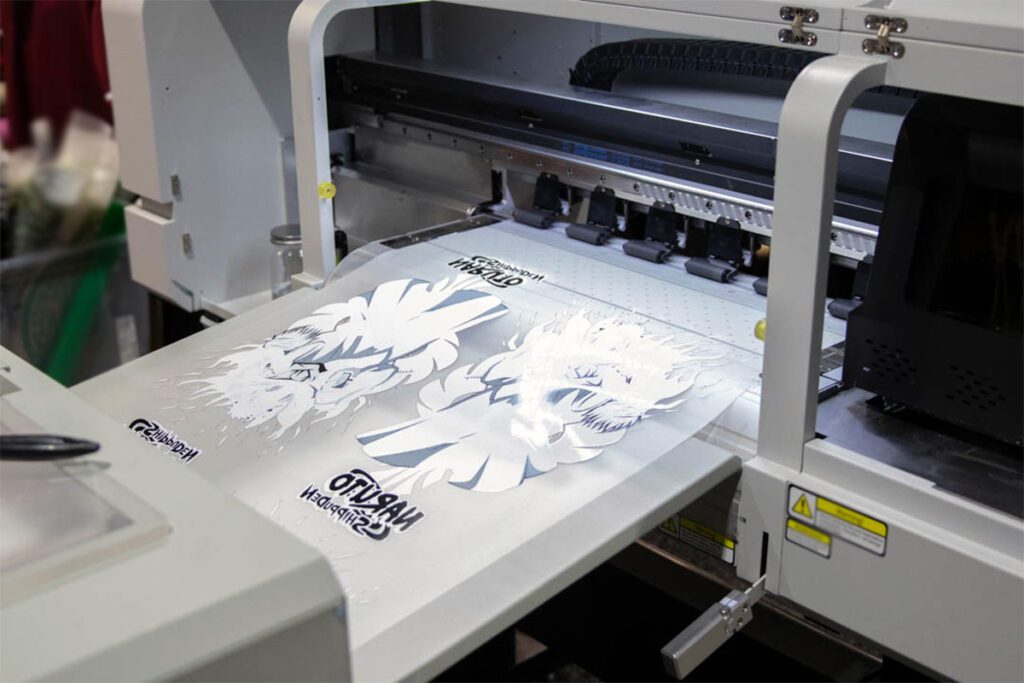Grasping DTF Printing: Tips and Tricks for Getting Vibrant and Long Lasting Prints
In the world of fabric printing, accomplishing dynamic and resilient prints is a desirable ability that can elevate the top quality of your output. From picking the appropriate products to adjust print settings and perfecting post-printing ending up techniques, there are various elements that can influence the result of your prints.

DTF Printing Essentials
For those brand-new to the world of textile printing, recognizing the principles of DTF printing is important to grasping this innovative strategy. Straight to Film (DTF) printing is a modern approach that includes transferring layouts from an unique film onto different textiles making use of a warm press. Unlike conventional methods like display printing, DTF provides benefits such as lively colors, elaborate detailing, and the capacity to print on varied materials like cotton, polyester, and blends.
The procedure begins by publishing the style on an unique DTF film making use of a compatible printer with CMYK or CMYKW ink collections. When the layout is printed, it is after that treated with a warm press to create a sturdy and resilient print. DTF printing is known for its capability to reproduce complicated styles with high precision and color precision, making it a prominent selection for businesses looking to produce personalized garments, advertising things, and more.
Picking the Right Materials

The sticky powder acts as a bonding agent in between the printed design and the textile, so it needs to have strong adhesion homes to guarantee a resilient and resilient transfer. By meticulously selecting the right materials for DTF printing, printers can enhance the quality, vibrancy, and durability of their prints.
Optimizing Publish Settings
When intending to attain the best results in DTF printing, careful focus to optimizing print settings is vital for making certain accurate and top notch transfers onto textiles. One crucial facet to consider when optimizing print settings is the resolution.
One more essential setting to enhance is the print rate. Discovering the ideal balance between speed and quality is essential. While enhancing the speed can improve efficiency, it may compromise the last print's quality and shade saturation. Try out various rates and observing the results can help identify the optimal setup for every print task - DTF Printing.
Additionally, fine-tuning color profiles and making certain correct color management are essential for attaining exact and constant shades across various prints. By adjusting color setups and profiles, printers can minimize shade discrepancies and produce consistent outcomes, enhancing the total print high quality and customer satisfaction.
Preparing Art Work for DTF Printing
To guarantee optimum results in DTF printing, precise focus to detail is essential when preparing artwork for transfer onto fabrics. Begin by choosing high-resolution images to preserve clarity and intensity in the final print. Vector graphics are preferred as they can be conveniently scaled without Visit Your URL shedding high quality. Convert the art work to CMYK color mode to make certain that the colors convert properly from display to print. Change the shade levels and comparison as needed to enhance the vibrancy of the layout. When adding message to the art work, choose font styles that are legible and appropriate for the intended size. Bear in mind to mirror the final style prior to printing to make sure that it moves correctly onto the garment. Furthermore, take into consideration the textile type and color when choosing the artwork, as these factors can impact the last appearance. By complying with these actions and paying very close attention to the details, you can prepare art work that is maximized for sturdy and vibrant DTF prints.
Post-Printing Finishing Techniques
Executing reliable post-printing ending up methods is important to improving the resilience and aesthetic allure of DTF prints on textiles. Once the printing procedure is total, applying heat to the published style is important.
After heat pushing, Read More Here peeling off the PET movie thoroughly is a critical step. This procedure should be done slowly and gradually to stop any damages to the print. Once the movie is eliminated, the print may call for extra healing time to additionally set the ink right into the fabric. This action helps improve the washability and sturdiness of the print, ensuring it can stand up to multiple clean cycles without fading or cracking.
Furthermore, cutting any excess film around the style can offer the final print a tidy and professional appearance. Taking the time to appropriately end up DTF prints post-printing can considerably affect the overall high quality and long life of the fabric design.

Final Thought
In verdict, mastering DTF printing requires a complete understanding of the fundamentals, picking ideal products, optimizing print settings, preparing artwork efficiently, and using post-printing ending up strategies. By adhering to these suggestions and techniques, one can attain durable and vibrant prints that meet their desired quality criteria. Constant method and interest to detail are vital in accomplishing successful outcomes in DTF printing.
From selecting the right materials to fine-tuning print setups and developing post-printing ending up techniques, there are countless elements that can affect the end result of your prints. Unlike typical approaches like screen printing, DTF supplies benefits such as visit the site dynamic colors, intricate describing, and the capacity to print on diverse products like cotton, polyester, and blends.
As soon as the style is printed, it is then cured with a warmth press to produce a long-lasting and sturdy print.When intending to achieve the ideal outcomes in DTF printing, careful focus to maximizing print setups is vital for making sure accurate and top quality transfers onto textiles.In final thought, grasping DTF printing requires a thorough understanding of the fundamentals, selecting ideal materials, maximizing print settings, preparing art work efficiently, and using post-printing finishing methods.
Comments on “Utilizing the Power of DTF Printing: Methods for High-Quality Material Designs”